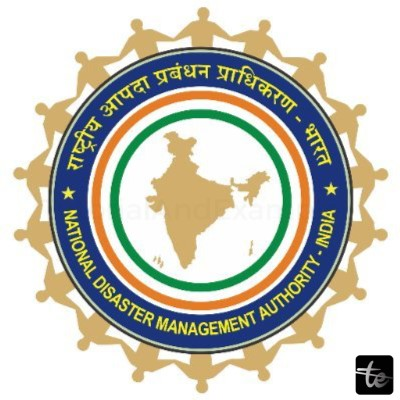NDMA Full Form
A major portion of the third general studies paper of the IAS Exam is dedicated to disaster management. The preliminary and major examinations will cover the broad and crucial subjects of internal security and disaster management. These subjects have a strong connection to contemporary events as well. Nearly all of the questions you ask them concern current affairs.

Background:
The concept of "disaster management" refers to an ongoing and unified method of arranging, preparing, coordinating, and putting into action measures that are necessary or practical for preventing danger or threats of disasters, mitigating risks of disasters, or reducing the severity of their repercussions building capacity, being ready to deal with disasters, responding quickly, determining the extent or the seriousness of the impacts of disasters, evacuations, rescue, aid, rehabilitation, and the reconstruction process.
National Disaster Management Authority
- The Natural Disaster Management Act of 2005, passed by the Indian government, established the National Disaster Management Authority (NDMA), which was legally founded in December 2006.
- It is the nation's Legislative Body for managing disasters.
- Mandate: Its main goals include crisis response and catastrophe resilience capacity building, as well as coordinating actions in response to disasters that are either natural or artificial. To guarantee a prompt and efficient reaction to disasters, it is also the supreme body that establishes disaster management policies, strategies, and regulations.
Vision of the National Disaster Management Authority
"To create a culture of avoidance, readiness, and mitigation by implementing a comprehensive, proactive, technology-driven, and environmentally friendly growth strategy which involves every stakeholder and builds a safer and more resilient India to disasters."
The National Disaster Management Authority's (NDMA) functions
- The following roles were intended to be fulfilled by the National Disaster Management Authority (NDMA) upon its establishment:
- Putting disaster prevention policies into action.
- Approving a range of plans, such as:
- National Plans
- Plans by various Indian government Ministries and departments
- Additional plans associated with the National Plan.
- Establishing rules for state government Bodies that reflect the State Plan.
- Establishing guidelines for various government agencies to incorporate disaster prevention measures or attenuate the impact of the disaster in their projects and development plans.
- Collaborating with employees to carry out the required policies and plans.
- Endorsing the allocation of monies required for mitigation.
- Relying on the federal government to assist and support the needy nations.
- Establishing general rules and principles for the National Institute of Disaster Management's (NIDM) operations.
Organizational Framework
- The NDMA's ex-officio chairman is the prime minister of India.
- The Vice-Chairman is the Cabinet Minister.
- The Secretary of the NDMA Administration is in charge of maintaining continuity and providing secretarial support.
- In addition, eight Secretaries of State make up the membership of the NDMA.
In addition, NDMA provides additional government employees, institutions, and the public with training and equipment to help them prepare for and respond to crises and disasters. It collaborates directly with the National Institute of Disaster Management to increase capacity. It creates procedures, provides practical instruction, and plans evacuation exercises. State and local disaster management cells are also outfitted and trained by it.
Cybercritical infrastructure protection may potentially fall within the purview of the Department of Home Affairs' NDMA. Consequently, regarding safeguarding critical and non-critical infrastructure, the CERT-IN of MeitY and NCIIPC of the NTRO share overlapping obligations with NDMA.
Programs:
The National Disaster Management Authority (NDMA) oversees several initiatives for response to particular events and mitigation.
These include the Decision Support System, School Safety Project, and National Cyclone Risk Management Project. The India Disaster Response Summit occurred in New Delhi on November 9, 2017. Facebook, a social media platform, and the National Disaster Management Authority (NDMA) collaborated to arrange this summit. India is the first nation to collaborate with Facebook on disaster relief efforts.
NDMA regulations
- Directions for Creating an Action Plan: Preventing and Handling Heat Waves
- Managing the Risk of Landslides
- Recommendations for Reducing Disaster Risk with Disabilities
- Guidelines for Families Affected by Disasters Regarding Temporary Shelters
- Guidelines for Lightning, Squall, Dust, Hailstorm, and Strong Winds Prevention and Management
- Guidelines for the Safety of Boat.
- Guidelines for Precincts and Sites of Cultural Heritage
- Rules Regarding Museums
- Recommendations for Minimum Relief Standards
- Hospital Safety Guidelines
- Instructions for the School Safety Policy
- Recommendations for Seismic Retrofitting of Structures and Buildings that Are Deficient
- Rules for Fire Service Scaling, Equipment Types, and Training
- Guidelines for the Communication and Information System for National Disaster Management
- Guidelines for Drought Management
- Recommendations for Urban Flooding Management
- Guidelines for the Consequences of Disaster Management Regarding the Dead